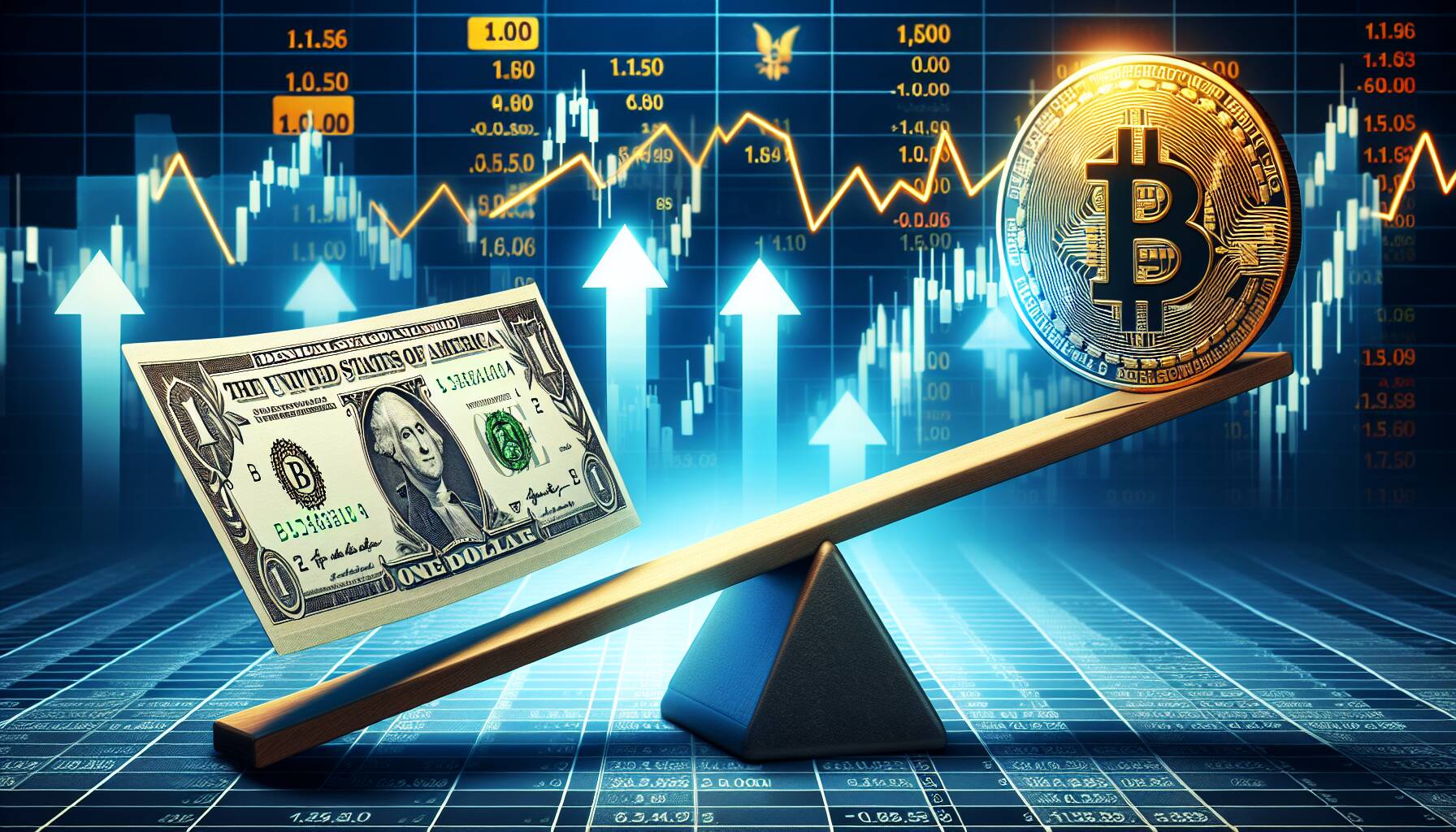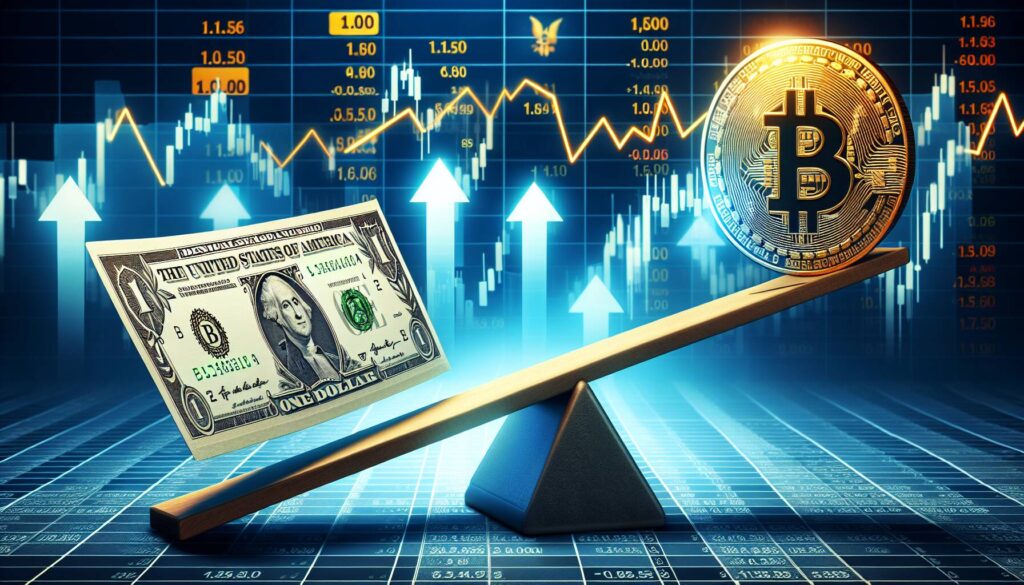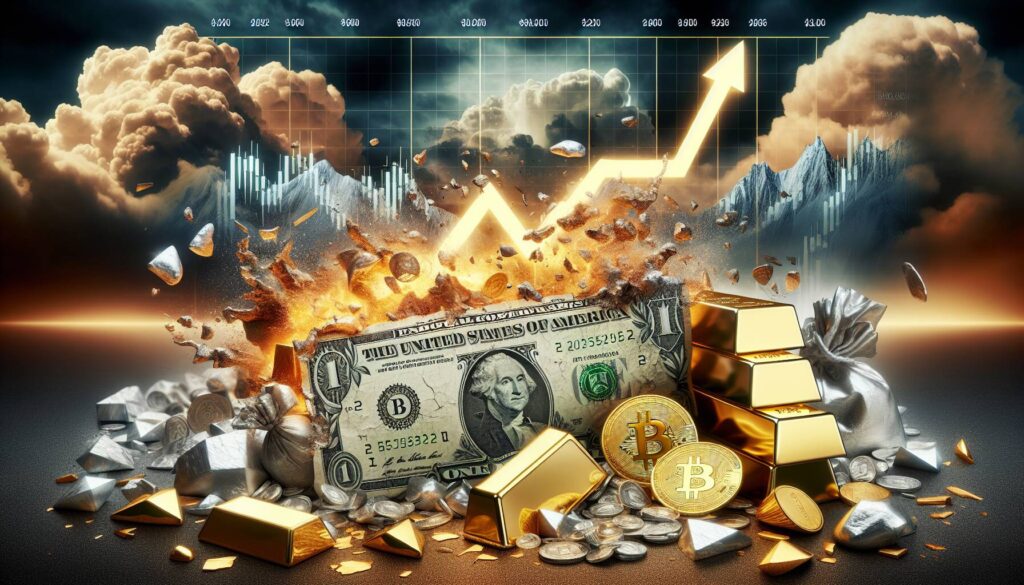The cryptocurrency landscape is witnessing notable shifts as market dynamics respond to recent economic indicators. In a reflection of investor sentiment, Bitcoin (BTC) saw a rise of over 1% following a core Consumer Price Index (CPI) report that exceeded expectations, with annualized core CPI surpassing 3%. This inflation figure, influenced by past tariff decisions, marks a crucial moment for the Federal Reserve, which historically rarely cuts interest rates under such inflationary conditions.
Despite inflation concerns, cryptocurrency assets remained buoyant, with Ethereum (ETH) experiencing an impressive surge of over 8%. This resilience in crypto prices has led some investors to speculate that the traditional 2% inflation target set by the Fed may no longer be attainable. U.S. Treasury Secretary’s comments advocating for a significant rate cut further underscored the market’s shifting tolerance toward inflation.
“Bitcoin’s current rally reveals a structural shift in crypto market participation that could define this cycle,” remarked Will K, CEO of VOOI. “Retail traders are quietly returning to DeFi platforms, which have removed previous barriers to entry,” he added, highlighting a dual adoption trend that’s reshaping the market landscape.
As institutional interest continues to rise through regulated exchange-traded funds while retail participants embrace decentralized finance, the composition of the cryptocurrency market is evolving. Notably, USDC issuer Circle has introduced a new stablecoin-focused layer 1 blockchain, emphasizing its commitment to financial transactions in this vibrant ecosystem.
In traditional markets, a noticeable decline in the MOVE index indicates reduced volatility expectations for U.S. Treasury notes, hinting at a broader risk-on sentiment that supports investment in riskier assets, including cryptocurrencies. As investors navigate this transforming economic landscape, the cryptocurrency sector continues to capture attention with its inherent potential for growth and innovation.

Impact of Current Economic Indicators and Crypto Trends
Key points from the article that may impact readers’ lives:
- U.S. Core CPI Surpasses 3%
- This marks a shift in inflation expectations, which may affect consumer purchasing power.
- Higher inflation could lead to increased costs for goods and services.
- Interest Rate Cuts Likely
- The Federal Reserve may cut interest rates, indicating a shift in monetary policy.
- Lower rates could stimulate borrowing and spending, potentially benefiting consumers and businesses.
- Surge in Bitcoin and Ether Prices
- Bitcoin’s increase suggests a growing interest in cryptocurrencies as hedges against inflation.
- Readers may consider investing in digital assets, reflecting changing investment strategies.
- Adoption of DeFi Platforms
- Retail investors are returning to decentralized finance (DeFi), altering traditional investment behaviors.
- Access to DeFi could provide readers with more investment opportunities and financial autonomy.
- Impact of Global Events
- Key geopolitical meetings may affect market stability and inflation rates.
- Readers should stay informed about global events that can influence local and global economies.
- Volatility in Traditional Markets
- The MOVE index suggests reduced volatility in U.S. Treasuries, affecting risk appetite among investors.
- Stable financial conditions might encourage readers to engage more actively in financial markets.
U.S. Inflation Trends and Cryptocurrency Market Dynamics
The recent surge in U.S. core CPI reports, which marked annualized inflation surpassing the 3% threshold for the first time in two years, has triggered significant reactions across various financial markets. While the conventional view positions inflation as a deterrent for equities, the behavior of cryptocurrency markets suggests a divergence in investor sentiment. Bitcoin’s resilience, climbing over 1% even amid mounting inflation concerns, highlights a growing acceptance of digital assets as a hedge against traditional inflationary pressures. This stands in contrast to gold, which has remained stagnant, indicating a possible shift in investor preferences.
Competitive Advantages: The bullish outlook for assets like Bitcoin and Ethereum comes from a growing adoption among both institutional and retail investors. The evolving landscape suggests a dual participation model where institutions engage via ETFs while retail traders exploit decentralized finance (DeFi) platforms. This bifurcation allows for a more fluid investment strategy, enabling users to capitalize on the benefits of both traditional and decentralized markets without the traditional barriers that once limited access.
In addition, the Federal Reserve’s inclination towards potentially lowering interest rates, despite rising core inflation, casts optimism over assets perceived as inflation hedges. Such motivations may draw additional capital into the crypto space, validating its role as a viable alternative investment, particularly amidst concerns over outdated monetary policies.
Disadvantages and Challenges: However, this optimistic outlook is not without its challenges. The rising core CPI and the Fed’s potential rate cuts may also reflect deeper economic vulnerabilities that could hamper sustainable growth in both cryptocurrency and traditional equities. Moreover, the lackluster performance of gold may signal neglect from institutional investors, which could undermine the equilibrium typically sought through diversification strategies that include precious metals alongside cryptocurrencies.
The recent movements in regulatory discussions, particularly regarding DeFi applications and stablecoin usage, indicate an evolving framework that could either facilitate accelerated growth or impose new restrictions. Entities like Circle with their stablecoin-focused developments might enjoy growth opportunities, whereas traditional financial institutions may face challenges adapting to evolving market dynamics, particularly if they resist the trend towards digitalization.
Who Benefits or Faces Challenges: The crypto ecosystem stands to benefit from a transition towards broader acceptance and integration into financial portfolios, appealing particularly to tech-savvy investors and those looking for alternatives amid inflation fears. Conversely, traditional stock markets may see volatility as investors recalibrate their strategies in response to shifting perceptions around inflation and interest rates. Retail investors, especially those returning to DeFi, might find newly accessible opportunities enhancing their engagement with the market.

















